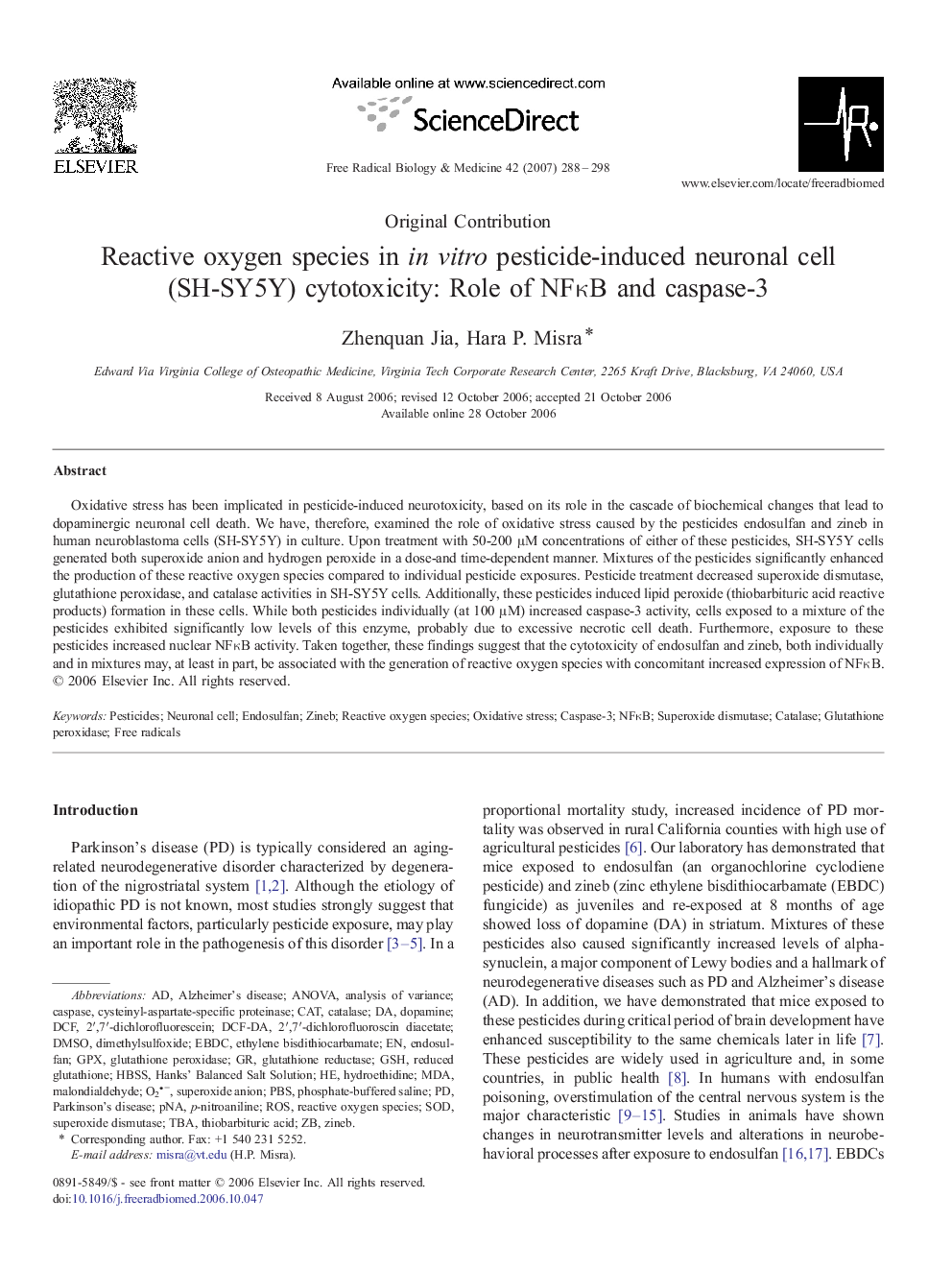| کد مقاله | کد نشریه | سال انتشار | مقاله انگلیسی | نسخه تمام متن |
|---|---|---|---|---|
| 1911293 | 1046810 | 2007 | 11 صفحه PDF | دانلود رایگان |

Oxidative stress has been implicated in pesticide-induced neurotoxicity, based on its role in the cascade of biochemical changes that lead to dopaminergic neuronal cell death. We have, therefore, examined the role of oxidative stress caused by the pesticides endosulfan and zineb in human neuroblastoma cells (SH-SY5Y) in culture. Upon treatment with 50-200 μM concentrations of either of these pesticides, SH-SY5Y cells generated both superoxide anion and hydrogen peroxide in a dose-and time-dependent manner. Mixtures of the pesticides significantly enhanced the production of these reactive oxygen species compared to individual pesticide exposures. Pesticide treatment decreased superoxide dismutase, glutathione peroxidase, and catalase activities in SH-SY5Y cells. Additionally, these pesticides induced lipid peroxide (thiobarbituric acid reactive products) formation in these cells. While both pesticides individually (at 100 μM) increased caspase-3 activity, cells exposed to a mixture of the pesticides exhibited significantly low levels of this enzyme, probably due to excessive necrotic cell death. Furthermore, exposure to these pesticides increased nuclear NFκB activity. Taken together, these findings suggest that the cytotoxicity of endosulfan and zineb, both individually and in mixtures may, at least in part, be associated with the generation of reactive oxygen species with concomitant increased expression of NFκB.
Journal: Free Radical Biology and Medicine - Volume 42, Issue 2, 15 January 2007, Pages 288–298